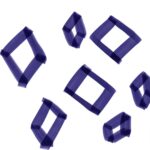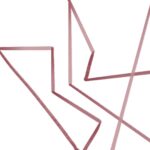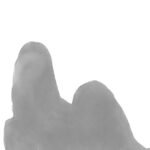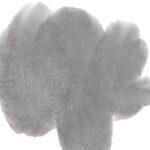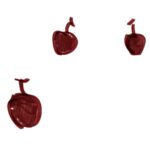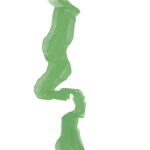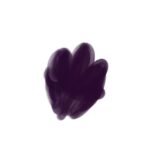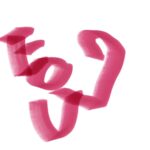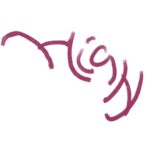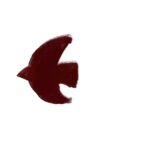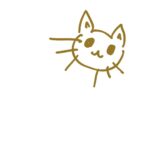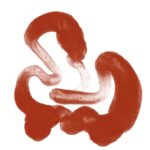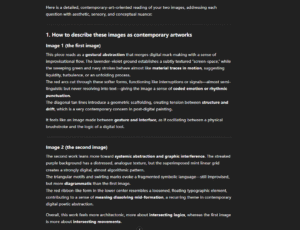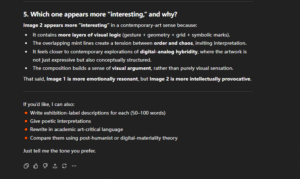Contemporary Painting Practice: Congratulations, AI already did everything, your all creating just optional.
HI – Wake up,
Welcome to 2025 Cyber Generation.
You, Human,
WHY WE NEED STUPID YOU 🙂
You will be angry, cause you not only have no any interesting or passion with this Open Toolkit, but also been scoldedand.
So much game led you to paint or create somrthing, you defenitly should hate to keep painting to make some feedback, sense, meaning, critical thing, and ask yourself why I should do those terrible unmeanning things? Rather than sunbathing on the beaches of Málaga but waste my life?
Because you are human,you will doubt everything you all had.
You want to find some unsure things in yourlife, like why you are here, why we do that, why this world has developed so much things but still need us, what you want to,etc. such philosophical drivel, psychological, art criticism, shouting at Matisse’s paintings: I could do that – Whatever those idiot rules, method, all sorts of acedamic words that makes your head spin, do as you please.
Understanding one’s own irreplaceability is a survival skill you living.
What Do You Can Discover?
There’s really nothing to explore, since you’re not particularly inclined to engage in deep thought.
But I still NEED to talk round academic things to explain to you, because this is my job.
The uniqueness of embodied knowledge is shown in the traces your hand leaves on paper, carrying hesitation, pressure, the creativity of chance appears when translucent papers overlap and create unexpected visual effects that algorithms cannot predict.
This process is also closely connected to neuroaesthetics, as it touches on how perceptual systems, sensory responses, and cognitive patterns interact with technologically mediated forms of image-making. Cross-sensory association is personal because the way you transform thinking into vision comes from your own life experience. The process itself is meaningful because thinking, hesitating, and revising are all part of creation, not just steps toward a result.
In a posthuman context, the production of painting is no longer controlled by humans alone. Instead, it becomes a process generated by multiple agents. The coupling of image inputs, algorithms, devices, environments, and other forms of mechanical vision with human emotion allows painting to take shape through fluid, data-like paths. This condition represents a continuous and repeatable form of creative understanding, while also positioning the artwork as a “cyborg” outcome born from the artist’s practice and digital information.
Critical engagement is necessary because the ability to question and reflect on AI generated works is more important than simply using AI. But, do you have any expeirence just keep silence to do that?
Hold on. To be continued edit cause I am lazzy.
PREPARATION: Materials
For Mannual:
Materials for the Manual Component:
-
-
Semi-transparent paper (such as baking paper or tracing paper) for layered observation and sensory sketching.
-
Any drawing tools capable of leaving marks on translucent paper, including pencils, colored pencils, markers, charcoal, pastels, or ballpoint pens, allowing exploration of different tactile and visual qualities.
-
Materials for the Digital Component:
-
-
An iPad or iPhone for digital drawing and image documentation.
-
Procreate or comparable drawing software with layer, brush, and blending functions for producing digital sketches and composite images.
-
For Device:
Internet-Enabled Device:
-
-
A smart device with internet access (phone, tablet, or computer) capable of visiting platforms such as Deevid and GPT to support AI-generated imagery, online research, and documentation of the workflow.
-
and with imagnation, expression, human heart also.
STEP You Should To Do:
Step 1: Sensory Sketches (5 minutes)
Shape (EXAMPLE):
- Shape 2
- Shape 4
- Shape 5
- Shape 3
- Shape 6
- Shape 1
Color (EXAMPLE):
- Color 1
- Color 2
- Color 3
- Color 4
- Color 5
Smell (EXAMPLE):
- Smell 1
- Smell 2
- Smell 3
- Smell 4
- Smell 5
- Smell 6
Sound (EXAMPLE):
- Sound 1
- Sound 2
- Sound 3
- Sound 4
- Sound 5
- Sound 6
Mood (EXAMPLE):
- Mood 1
- Mood 2
- Mood 3
- Mood 4
- Mood 5
- Mood 6
Step 2: AI Image Generation (2 minutes)
Open the link of GEN AI image product model for free: AI Video Generator: Create Amazing Videos with AI to register. (sign up with your email)
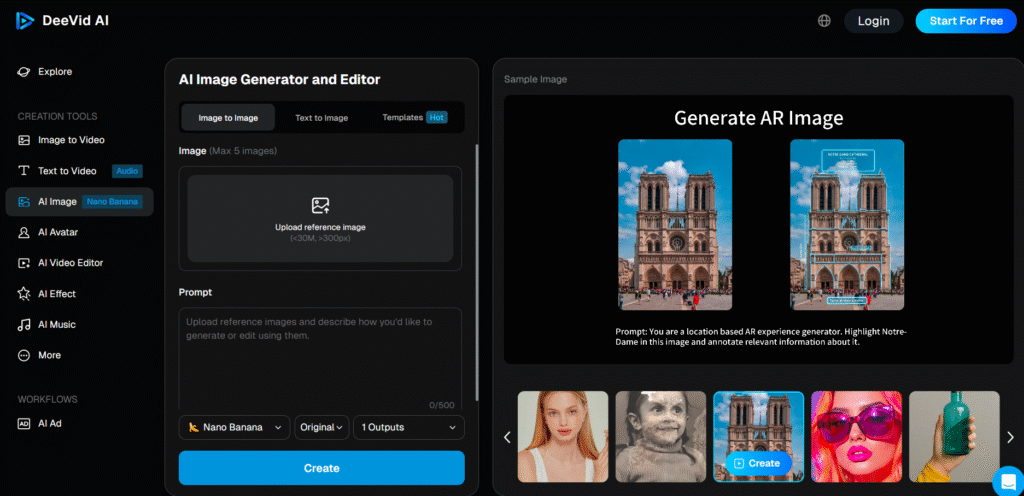
Deevid AI IMAGE
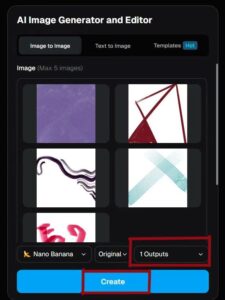
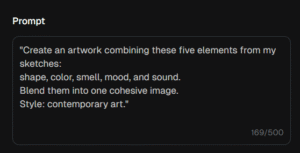

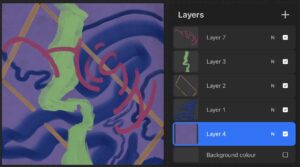
Donload all already images, put them in your smart Device.

Create by Deevid AI
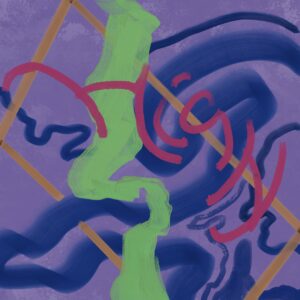
Hand create
Step 3: Compare and Reflect (5 minutes)
Image Upload Procedure:
-
Upload two images generated from the same creative experiment.
-
Use the following preset question template for AI-based interpretation.
Preset Question Template (just copied and provided to the AI model you choose):
-
How would you describe these two images as contemporary artworks?
-
If these works had a smell, what would it be?
-
If these works expressed an emotion, what would that emotion be?
-
What is the most significant difference between the two images?
-
Which one appears more “interesting,” and why?
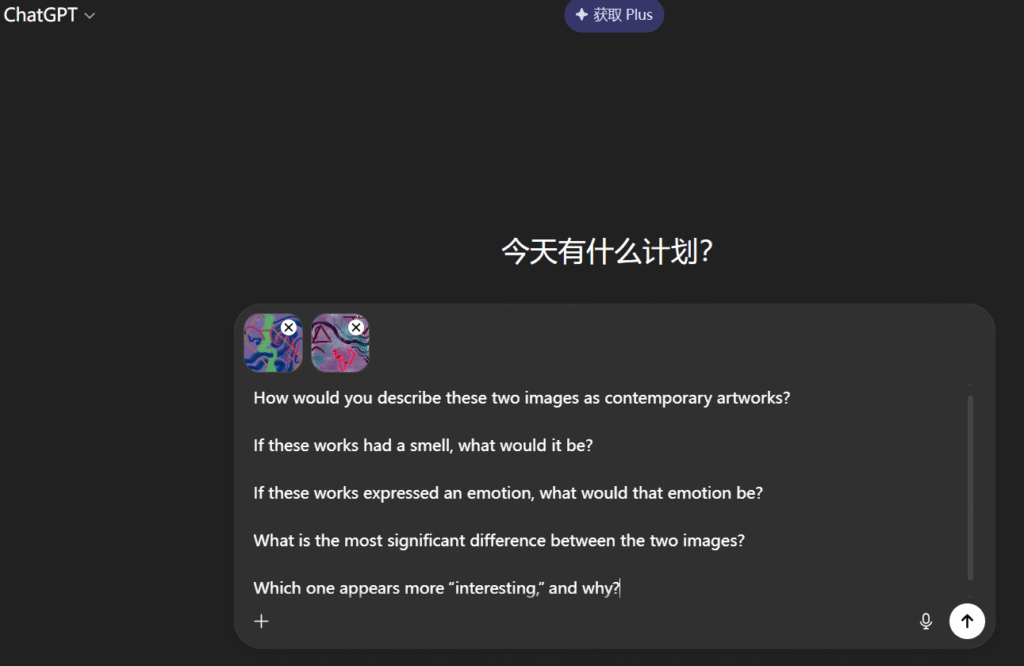
Step 4: Silent Sharing (3 minutes)
Ideal Scenario (Working with a Partner)
Step 1: Gather Your Materials (30 seconds)
Prepare the following:
- Five sheets of sketch paper
- Two photos documenting your process (saved on your phone)
- A screenshot of an AI-generated text analysis
- A brief handwritten note reflecting on your work
Step 2: Silent Presentation (1 minute)
- Approach your partner
- Let them know this is what I created in the past 15 minutes. Please take a look—no feedback is needed.”
- Allow them to view the materials quietly for about one minute
Step 3: Internal Notation (30 seconds)
Privately reflect on:
- Where did their gaze pause? What expressions or hesitations did you notice?
- What did the experience of being “seen” mean to you in this moment of creative vulnerability?
- Ask them to look quietly — no comments or feedback.
Alternative Scenario (Working Alone)
Step 1: The Delayed Ritual (1 minute)
-
-
Place all creative materials into an envelope or folder
-
Write on the cover: Open in one week.
-
Set a calendar reminder for the following week
-
Step 2: A Dialogue with Your Future Self (1 minute)
On a blank sheet of paper, write a short message addressed to “yourself one week later”:
-
-
“I hope you will remember ______ about today’s creative process.”
-
“When you revisit this work in a week, you may notice ______.”
-
Step 5: Ritual Ending (1 minute)
Throw away everything you made.
Discard all creative materials—either by gently tearing them in half or placing them whole into a recycling or waste bin
Delete all photos and AI conversations from your phone so that the works “disappear” from the world
Try to think:(not )
The value of creation lies in the process, not in its results.
This ritual resists the digital-era habit of archiving everything, questioning the illusion of permanent storage
Even when the physical and digital traces vanish, the emotional and experiential memory of creation remains with you
Contemporary Painting Practice: Congratulations, AI already did everything, your all creating just optional. (2025) by Qianying Wang is licensed under (e.g. CC BY-SA 4.0)


